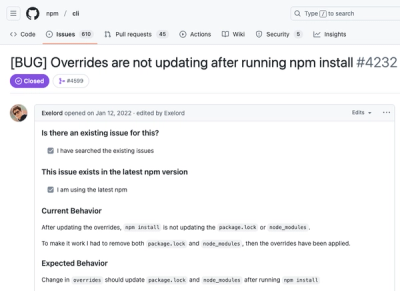@nebula.js/sn-sankey-chart
The Sankey chart is a flow chart which visually emphasizes major transfers or flows within defined system boundaries. The width of the chart arrows is shown proportionally to the flow quantity.
- A minimum of two dimensions and one measure is required.
You can use up to five dimensions, but only one measure.
- The dimensions do not need to be of equal size on each side of the diagram.
- You can use the dimension values to set the color of the flows in the chart.
- Link colors can be based on source or target anchor.
Requirements
Requires @nebula.js/stardust version 1.2.0 or later.
Installing
If you use npm: npm install @nebula.js/sn-sankey-chart. You can also load through the script tag directly from https://unpkg.com.
Usage
import { embed } from '@nebula.js/stardust';
import sankey from '@nebula.js/sn-sankey-chart';
const nuked = embed(app, {
types: [
{
name: 'sankey',
load: () => Promise.resolve(sankey),
},
],
});
nuked.render({
element,
type: 'sankey',
fields: ['Region', 'Product Group', 'Product Type', 'Product Line', '=Sum(Margin)'],
properties: {
node: {
padding: 0.2,
width: 0.3,
},
link: {
opacity: 0.5,
shadow: false,
color: 3,
colorBy: 'custom',
},
},
});
More examples
Node and link colors
You can change the node colors of each dimension value.
The color should be a valid CSS color.
The colors of chart links are based on either the source or target anchors.
To apply the source or target anchor color to chart links
either use the string ='SOURCE' or ='TARGET'.
You can also select a separate color by entering a color code string.
The color should be a valid CSS color.
nuked.render({
element: document.querySelector('.object'),
type: 'sankeyChart',
properties: {
node: {
padding: 0.1,
width: 0.7,
},
qHyperCubeDef: {
qDimensions: [
{
qDef: {
qFieldDefs: ['Region'],
},
qAttributeExpressions: [
{
qExpression: "if(Sum(total<Region> Margin) > 4500000, '#53ac94', '#ac536b')",
},
],
},
{
qDef: {
qFieldDefs: ['Product Group'],
},
qAttributeExpressions: [
{
qExpression: "'#28bad7'",
},
],
},
],
qMeasures: [
{
qDef: {
qDef: 'Sum(Margin)',
},
qAttributeExpressions: [
{
qExpression: "if(Sum(Margin) > 300000, '#53ac94', '#ac536b')",
},
],
},
],
qInitialDataFetch: [
{
qLeft: 0,
qTop: 0,
qWidth: 6,
qHeight: 1000,
},
],
},
},
});
Links colored based on their source
nuked.render({
element: document.querySelector('.object'),
type: 'sankeyChart',
fields: ['Product Group', 'Product Type'],
properties: {
qHyperCubeDef: {
qDimensions: [
{
qDef: {
qFieldDefs: ['Region'],
},
qAttributeExpressions: [
{
qExpression: "if(Sum(total<Region> Margin) > 4500000, '#53ac94', '#ac536b')",
},
],
},
],
qMeasures: [
{
qDef: {
qDef: 'Sum(Margin)',
},
qAttributeExpressions: [
{
qExpression: "='SOURCE'",
},
],
},
],
qInitialDataFetch: [
{
qLeft: 0,
qTop: 0,
qWidth: 6,
qHeight: 1000,
},
],
},
},
});
Sankey chart plugins
A plugin can be passed into a Sankey chart to add or modify its capability
or visual appearance.
A plugin needs to be defined before it can be rendered together with the chart.
const textPlugin = {
info: {
name: 'text-plugin',
type: 'component-definition',
},
fn: ({ layout, keys }) => {
const componentDefinition = {
type: 'text',
key: 'my-text',
text: 'Sales of Clothes in Different Areas',
layout: { dock: 'top' },
};
return componentDefinition;
},
};
nuked.render({
element: document.getElementById('object'),
type: 'sn-sankey-chart',
fields: ['CategoryName', 'Region', '=Sum(Sales)'],
plugins: [textPlugin],
});
The plugin definition is an object, with two properties info and fn.
The fn returns a picasso.js component. To build this component,
some important chart internals are passed into the argument object of fn.
const pluginArgs = {
layout,
keys: {
SCALE: { DIMENSIONS },
COMPONENT: { LABELS_TITLES, LABELS },
},
};
With plugins, you can either add new components or modify existing components
of the Sankey chart.
Add new components
The new component can be a standard Picasso component
or a custom Picasso component. Here we demo a standard label component
which add a label at the top center of the chart.
const textPlugin = {
info: {
name: 'text-plugin',
type: 'component-definition',
},
fn: ({ layout, keys }) => {
const componentDefinition = {
type: 'text',
key: 'my-text',
text: 'Sales of Clothes in Different Areas',
layout: { dock: 'top' },
};
return componentDefinition;
},
};
Modify existing components
As an example, the appearance of the labels can be
modified by plugins.
To overide an existing component, fn should returns a picasso.js component
that has the same key as the existing component (keys.COMPONENT.LABELS in
this example)
const labelsPlugin = {
info: {
name: 'labels-plugin',
type: 'component-definition',
},
fn: ({ keys, layout }) => {
const componentDefinition = {
type: 'labels',
key: keys.COMPONENT.LABELS,
settings: {
sources: [
{
component: 'san',
selector: '.labelCenter',
strategy: {
type: 'rows',
settings: {
align: 0.5,
justify: 0.5,
padding: 4,
labels: [{}, {}],
},
},
},
{
component: 'san',
selector: '.labelLeft',
strategy: {
type: 'rows',
settings: {
align: 0,
justify: 0.5,
padding: 4,
fontFamily: 'Helvetica',
fontSize: '14',
fill: 'darkgreen',
},
},
},
{
component: 'san',
selector: '.labelRight',
strategy: {
type: 'rows',
settings: {
align: 1,
justify: 0.5,
padding: 4,
fontFamily: 'Helvetica',
fontSize: '14',
fill: 'darkred',
},
},
},
],
},
};
return componentDefinition;
},
};
Plugins disclaimer
- The plugins API is still experimental.
- We can not guarantee our charts to be compatible with all different settings, especially when modifying existing components.



